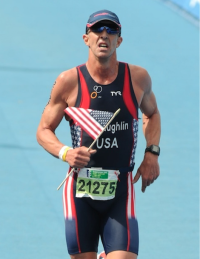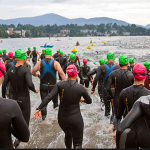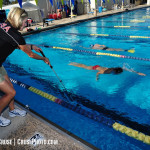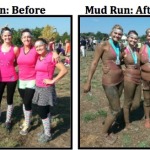My initial response to this question is YES. But, that’s the simple answer. The more complicated answer is: it depends. Read on for 8 tips on how to understand which factors matter for you, how to get more out of your warm up, improve race results and learn sample warm up strategies for your next triathlon.
Importance of warm up. The warm up is important as both a physical and a psychological preparation. By developing a regular warm up routine, you can decrease uncertainty and anxiety as you direct your attention to preparing your body to meet the physical demands of the competition. Your warm up routine can be systematically designed to promote optimal functioning in the final few minutes before performance.
Experience level and performance goals. For beginners or those with triathlon completion goals, warm up is not critical, but is still beneficial. Participation and enjoyment are the goals, so warm up is not a priority. But even a short dunk before the start will help you be better prepared for the challenges ahead. If you are more experienced or want to achieve faster times in your race, then warm up is critical to your success. It’s unreasonable to expect your best performance in a race if you have not properly prepared both physically and psychologically for the demands of your race, especially for a fast start. A proper warm up is an integral part of planning and preparation.
Race distance. The shorter the race distance, the more important warm up is. Faster speeds require more ‘priming’ of your engine (heart, lungs, muscles and nervous system, including your brain). You will feel better and perform better if your body is ready for the demands of a hard, fast race. But, for a long distance race, such as Ironman, a light or even no warm up may suffice.
Two tiered warm up. Warm up can consist of one or two types of activity: easy, low level effort and/or short, higher intensity efforts. The first type of warm up to do is easy paced efforts. Since most races happen in the morning hours, it‘s important to get your body to really wake up and start moving by activating and warming your muscles and getting you heart rate up. The easy warm up transitions your body from rest to activity. The second tier of warm up consists of short intervals and drills (light plyometrics). Complete a low intensity warm up if you are new to triathlon and both tiers if you’re experienced and looking for improved performance.
Race warm up starts the day (or two) before race day. I call the day before race day workouts: pre-race warm up day. In the days leading up to a triathlon, most of us are resting to taper for the race. After long periods of regular activity, rest can leave our bodies feeling tired and sluggish. While the rest is important, getting back to activity before your race will leave you feeling strong and ready to race instead of feeling flat for your race.
Athlete type. Although all bodies will benefit from a good warm up, not all bodies need the same type and amount of warm up. If you tend to have more fast twitch muscles and are better at speed activities, you’ll benefit from more intensity in your warm up and may need some intensity for 1-2 days leading up to the race. If you’re more of a diesel engine (more slow twitch fibers), you’ll benefit from a low intensity aerobic warm up with only small amounts of intensity. This is partly a concept that is learned through trial and error. One of my triathletes raced back to back days at USAT Nationals and did better on the second day’s race, a sprint. I learned that he needs more intensity than most leading into a race to achieve his best results. But that same strategy for other triathletes would leave them too tired to perform well on race day.
Sample day-before warm up workouts. Perform a short swim, bike and run in any order that works for your schedule. It’s also OK to opt for only one or two of these workouts. If possible, do these on the race course. Example:
- 15-20 minute swim. Option: 3-8 rounds of 20 strokes fast/10 strokes easy
- 15-30 minute bike. Option: 5×1 minute fast spins with 1 minute recovery. Followed by a 2-3 minute build to race effort or threshold
- 15-20 minute run. Option: 5-10 minutes of light drills. 4-6×10-15 second strides, 2 minute jog/walk recovery.
Perform the short intervals within the total suggested time. By performing this type of workout the day before the race, your morning warm up routine will be quicker, smoother, easier to perform and give you the most best results.
Sample morning-of warm up. Choose one to three of these options; much depends on race requirements such as bike check in and swim course regulation. Suggested order:
- Bike: 10-15 minutes easy. Option: 3×30 second fast spins, 1 minute easy between. 1×1-2 minute race effort, easy spin for 3-5 minutes.
- Run: 10-15 minutes easy. Option: 5 minutes of light drills and 2-3x 10 second strides with 1-2 minute walk/jog between.
- Swim: 5-15 minutes. Start slow and allow your body and breathing to acclimate to the open water temperature. Option: 2-5 rounds of 10 strokes fast/10 strokes easy.
Trial & error process. The science of training and coaching can only be successfully applied to the individual through the process of trial and error. Create a warm up plan that makes the most sense for you and your goals. Try it out in smaller triathlons or single sport races, then correct and refine it over time. Once you have your routine down, it’ll be easy to implement and give you a strong platform to perform at your best.
Getting in a proper warm up sets you up for success.



